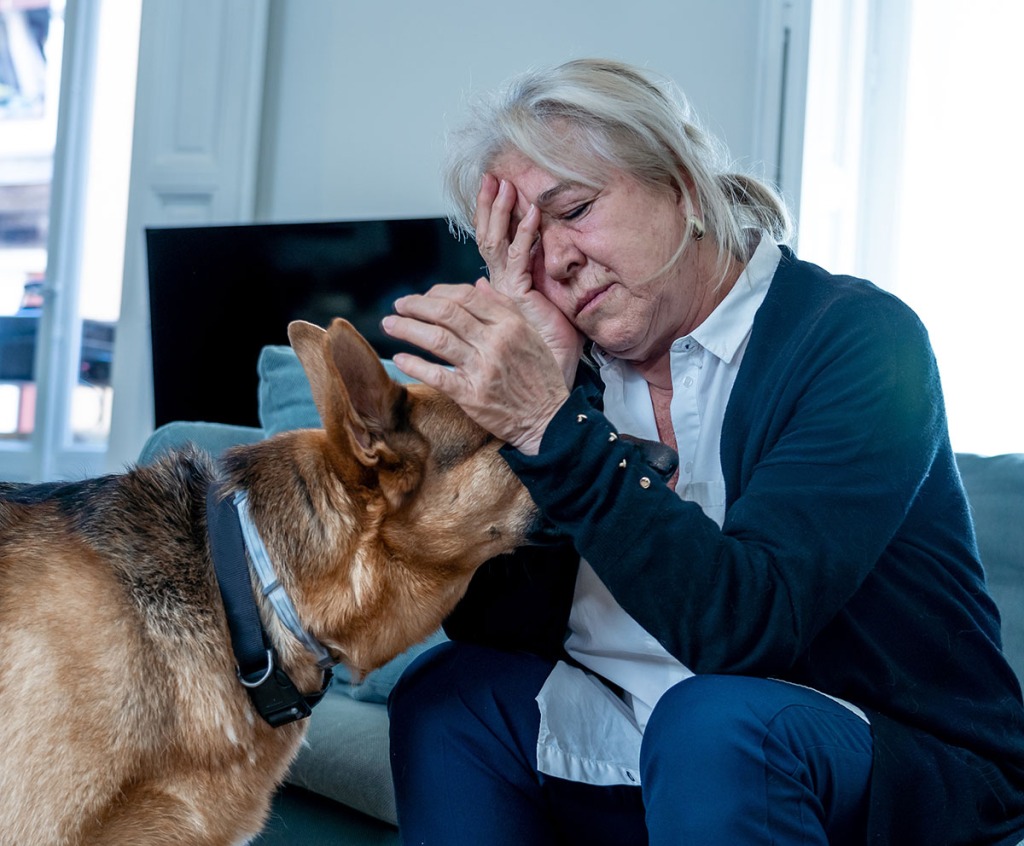
I recently had a phone conversation with a potential client that nearly caused me to explode. Fair warning, if you don’t want to read the rantings of a disgruntled dog trainer, save yourself and click on by.
Over the course of the pandemic, I’ve been conducting virtual (Zoom) training sessions. In my opinion, this type of consult works well for some things and is not as appropriate for others. If I feel that an issue requires an in-person trainer, I will refer the person to one of my local colleagues who are still seeing clients. And so, after receiving an email from a woman who recently adopted a 5-year-old pit bull that is reactive toward other dogs and is now beginning to be reactive toward her partner, I called to find out more. She sounded like a lovely woman who truly loves the dog and wants to do what’s best for him. But she was very distraught after having read articles online from a self-proclaimed celebrity dog trainer who had plenty of advice. The gist of it was that the dog’s behavior was entirely the owner’s fault. In this case, the dog-dog aggression, the aggression toward people, all of it could be laid at the new owner’s feet because she was “babying the dog”.
The owner described the dog, who she’d had for only a month, as being anxious and insecure. He was afraid of men, uncertain in a variety of situations, clingy with her, and actually afraid of other dogs, hence the fear-based reactivity. The advice on the website (again, this was not a personal consult, but general advice meant for anyone reading) had been to ignore the dog completely. Ignore the dog! This poor dog, who had been given up to the shelter after the two other dogs in the home had been beating up on him, who had luckily found his way into a loving home, now seemed, as she said, “very sad” that he was suddenly being ignored by the one person he had bonded with and trusted. I listened silently, feeling more and more angry on behalf of the dog. How would you feel if your significant other suddenly started ignoring you for no reason you could fathom? Would it make you feel less anxious? Would it take away your unwanted behaviors, or would it make them worse due to increased distress? And do you have any idea how hard it is to bite your tongue while steam is coming out of your ears?
Combined with the role of genetics, this dog is five years old and has had five years’ worth of experiences that have contributed to shaping his behavior. Unless the woman was seriously mistreating him, I don’t see how his current behavior is her fault. And let’s say she is “babying” the dog a bit. So what? This poor woman felt so guilty that she had allegedly caused the behavior issues that she was nearly in tears when I explained that it was not her fault. Hell, I “baby” my dogs in some ways and they surely aren’t threatening people because of it. What is with these trainers whose entire philosophy is to blame the owner? I’m not saying that owners can’t contribute to a dog’s problems. Of course they can. An owner can certainly make a behavior problem worse, and yes, in some cases even cause one. But to say that every dog’s behavior issue is caused by the owner, that the person simply needs to be a stronger leader, teach the dog his place, or the like brings to mind Abraham Maslow’s quote, “If the only tool you have is a hammer, you tend to see every problem as a nail.” If, as a trainer, you come up with the same reason for every dog’s issues and give the same advice to all owners to solve it, it’s time to get yourself some new tools. As for the woman, she was incredibly relieved to hear that she didn’t have to ignore her dog, and in fact, she gave him some affection while we were talking. She said he seemed extremely happy for it, and I could hear the change in her voice as well. I referred her to a local trainer, and am hoping this kind woman and her dog can get on track and have a long and happy life together.
__________________________________________________________________________________________________________________
You can find my books for dog trainers and enthusiasts at http://www.nicolewilde.com, along with seminar DVDs and more. You can also find me on Facebook and Twitter, and check out my Good Mojo Pet Portraits and Photomagical Art.



 Posted by wildewmn
Posted by wildewmn 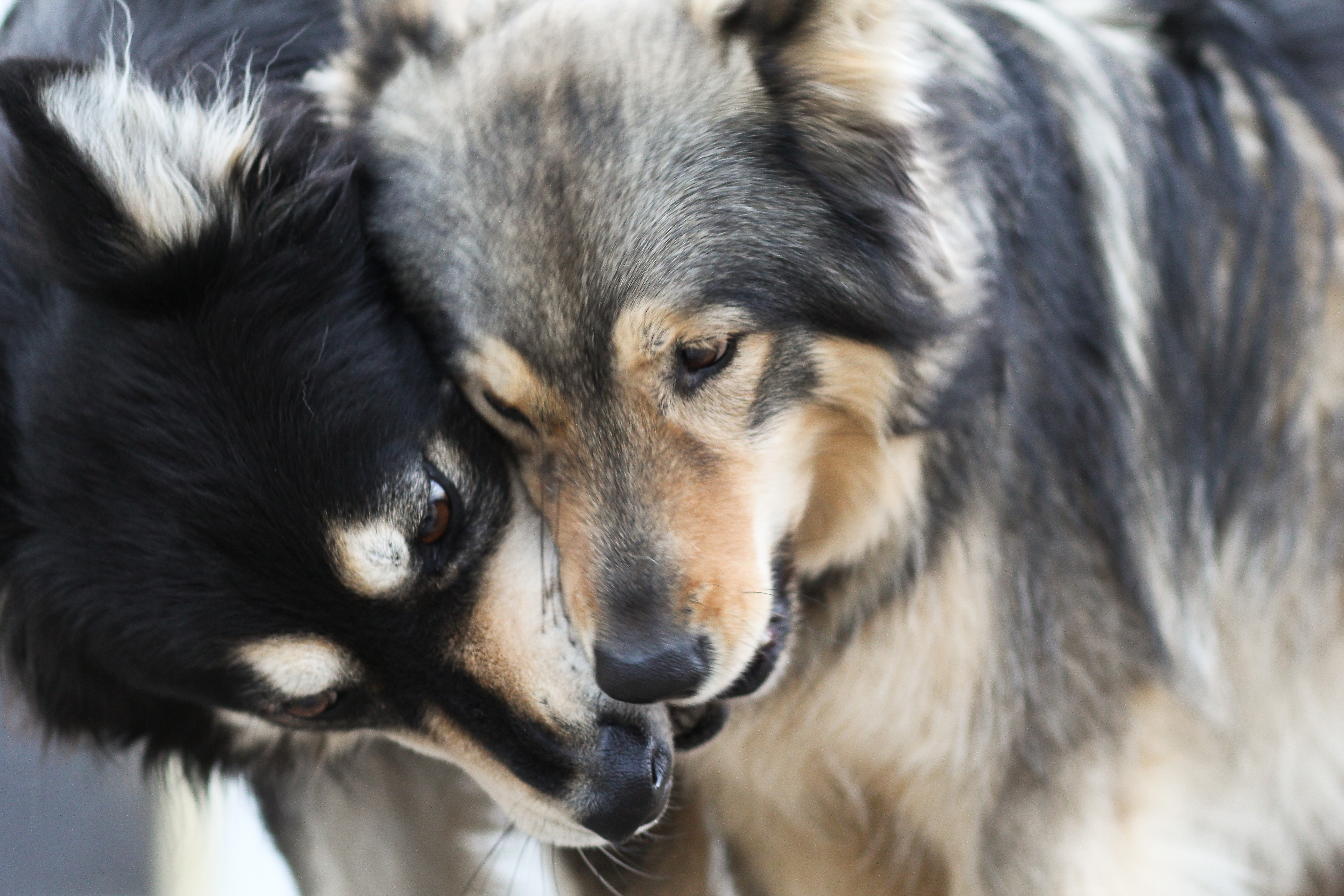 Enforced togetherness brought on by stay-at-home orders has been a double-edged sword. I worry about things like how many dogs are going to have separation anxiety issues when people start going back to work. But beyond that, while some families have enjoyed spending increased time together, others are not quite so thrilled. In the latter category are homes with dogs who don’t get along. I’m not talking about dogs who want to seriously injure each other and can’t be allowed in the same space; I mean dogs who cohabitate but are likely to get into fights now and then and perhaps even get snarky with each other on a regular basis.
Enforced togetherness brought on by stay-at-home orders has been a double-edged sword. I worry about things like how many dogs are going to have separation anxiety issues when people start going back to work. But beyond that, while some families have enjoyed spending increased time together, others are not quite so thrilled. In the latter category are homes with dogs who don’t get along. I’m not talking about dogs who want to seriously injure each other and can’t be allowed in the same space; I mean dogs who cohabitate but are likely to get into fights now and then and perhaps even get snarky with each other on a regular basis.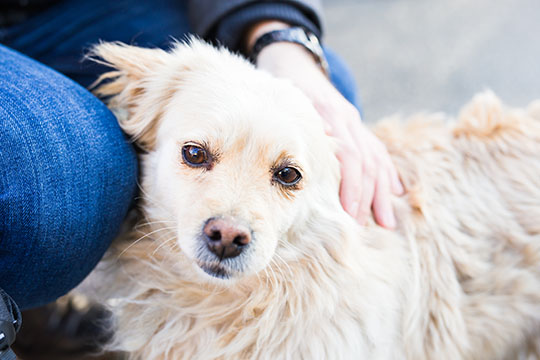 If asked, we’d all say that of course we would stand up for our dogs; we’d do just about anything to keep them safe, healthy, and happy. But the reality is that situations arise where, due to social pressures and other factors, we don’t speak out when we should. For example, I cannot tell you how many training clients I’ve heard say things like, “The vet was really rough with Bella. I could tell she was scared. The vet slammed her on her back and held her down, and Bella became even more afraid.” Having worked at a vet’s office, I understand that some restraint and firm handling is necessary for certain treatments. But some vets are simply better than others about reading canine body language and working with dogs instead of using brute force to achieve their medical objectives. Unfortunately, very few owners will stand up to a veterinarian to voice their concerns.
If asked, we’d all say that of course we would stand up for our dogs; we’d do just about anything to keep them safe, healthy, and happy. But the reality is that situations arise where, due to social pressures and other factors, we don’t speak out when we should. For example, I cannot tell you how many training clients I’ve heard say things like, “The vet was really rough with Bella. I could tell she was scared. The vet slammed her on her back and held her down, and Bella became even more afraid.” Having worked at a vet’s office, I understand that some restraint and firm handling is necessary for certain treatments. But some vets are simply better than others about reading canine body language and working with dogs instead of using brute force to achieve their medical objectives. Unfortunately, very few owners will stand up to a veterinarian to voice their concerns.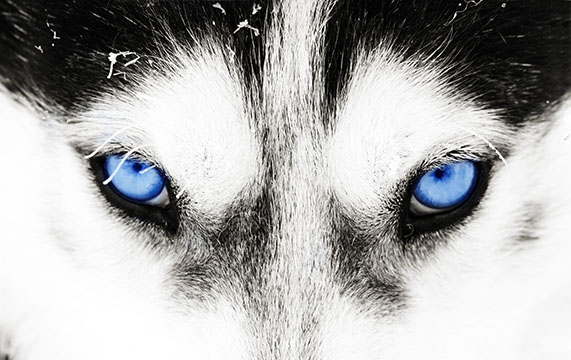 I’ve been involved in wolf, wolfdog and dog rescue for something like 30 years. I’ve volunteered for and have been employed by L.A. city shelters. I’ve worked for a respected rescue group. In addition to being a professional trainer and behavior specialist, I now volunteer at an L.A. County shelter. I share all of this to let you know that I’ve seen a lot in the dog world over the years. But never in all of that time have I seen anything like the flood of huskies that is now pouring in to California shelters and rescues.
I’ve been involved in wolf, wolfdog and dog rescue for something like 30 years. I’ve volunteered for and have been employed by L.A. city shelters. I’ve worked for a respected rescue group. In addition to being a professional trainer and behavior specialist, I now volunteer at an L.A. County shelter. I share all of this to let you know that I’ve seen a lot in the dog world over the years. But never in all of that time have I seen anything like the flood of huskies that is now pouring in to California shelters and rescues. Dogs have an instinctive startle reflex, just like humans do. Upon hearing a loud noise or being touched when not expecting it, most of us, human or canine, will startle. It’s a good thing we do, because that automatic response keeps us safe from predators and other dangers. The startle reflex is often put to use in traditional temperament tests where, for example, a ring of keys is dropped near a litter of puppies. All the pups naturally startle, but some will run and hide while others will recover quickly. This test is meant to gauge the pups’ confidence level.
Dogs have an instinctive startle reflex, just like humans do. Upon hearing a loud noise or being touched when not expecting it, most of us, human or canine, will startle. It’s a good thing we do, because that automatic response keeps us safe from predators and other dangers. The startle reflex is often put to use in traditional temperament tests where, for example, a ring of keys is dropped near a litter of puppies. All the pups naturally startle, but some will run and hide while others will recover quickly. This test is meant to gauge the pups’ confidence level.
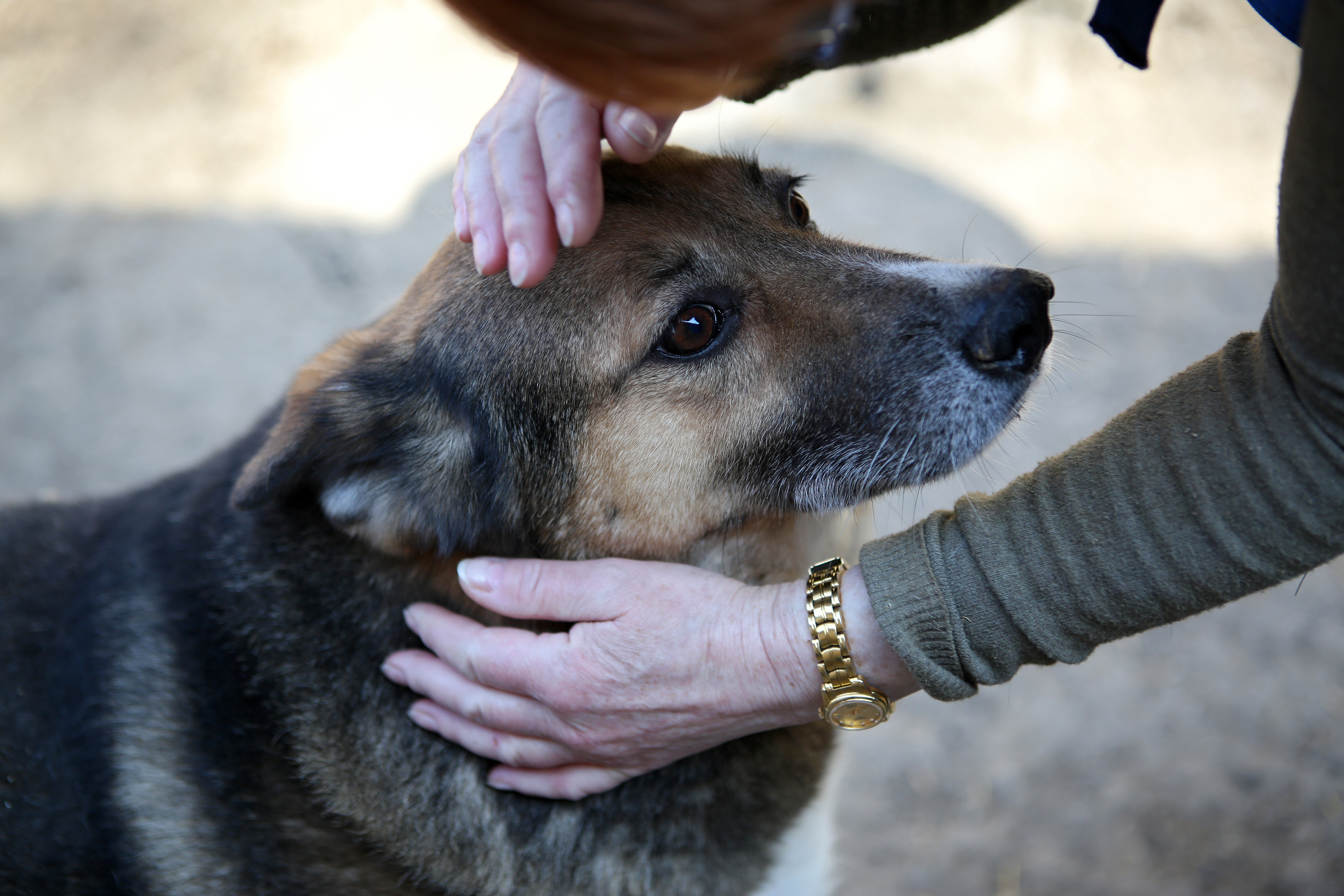
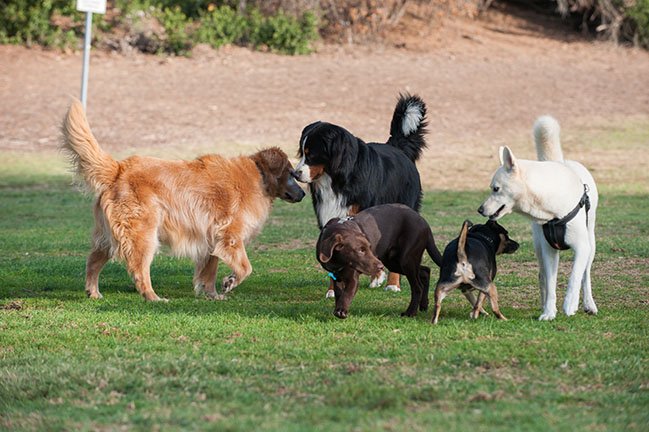
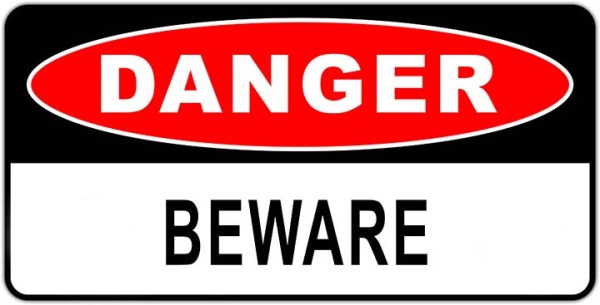 A man and his German shepherd were alone in the dog park one early morning when another man with three dogs appeared. The three were overly aroused and snarking at each other in the airlock. As soon as the group entered the park, the shepherd ran up to them. The largest of the three, a malinois, immediately attacked the shepherd. It was noisy. It was horrific. It was terrible to see. Fortunately, the shepherd’s owner had the wisdom to pull the attacker away, rather than grabbing his own dog. The malinois’ owner then restrained his dog by the handle on the dog’s body harness. I shouted at the shepherd’s owner to grab his dog as well. Instead, he called his dog to him. The shepherd did not listen, and began walking back toward the malinois. Once again, I urged the man to get his dog on a leash. Instead, he called the shepherd to him. Again, the dog did not listen and this time, he approached the malinois, who pulled free of his owner and once again attacked the shepherd. This time the malinois’ two housemate dogs joined in. Now there were three dogs attacking the poor shepherd, who is not a dog that fights back.
A man and his German shepherd were alone in the dog park one early morning when another man with three dogs appeared. The three were overly aroused and snarking at each other in the airlock. As soon as the group entered the park, the shepherd ran up to them. The largest of the three, a malinois, immediately attacked the shepherd. It was noisy. It was horrific. It was terrible to see. Fortunately, the shepherd’s owner had the wisdom to pull the attacker away, rather than grabbing his own dog. The malinois’ owner then restrained his dog by the handle on the dog’s body harness. I shouted at the shepherd’s owner to grab his dog as well. Instead, he called his dog to him. The shepherd did not listen, and began walking back toward the malinois. Once again, I urged the man to get his dog on a leash. Instead, he called the shepherd to him. Again, the dog did not listen and this time, he approached the malinois, who pulled free of his owner and once again attacked the shepherd. This time the malinois’ two housemate dogs joined in. Now there were three dogs attacking the poor shepherd, who is not a dog that fights back. You don’t always get the dog you were expecting. Just ask my training client Melissa, who envisioned a Lab puppy like the one her neighbor has; a sweet, reasonably calm, focused dog. In fact, her now six-month-old pup is the polar opposite of the show-lines-bred dog who lives down the hall. Not only is Hailey from field-bred lines, meaning she’s got plenty of energy and drive and needs a job to do, but even for a dog typical of those genetics, she is over-the-top excitable, and prone to incessant jumping and hard mouthing on Melissa and her boyfriend, visitors, and yes, even the trainer. When I say over the top, I am comparing Hailey to the many jumping, mouthing dogs I’ve helped over the years. When Melissa and her boyfriend come home after a long day of work (Hailey goes to work with Melissa), thanks to Hailey’s behavior, they can’t relax. The thing is, Hailey is actually very sweet, affectionate, and intelligent. She just has an alarming excess of very scattered energy, and what I see as a serious need to learn how to focus and relax. Fortunately, Melissa is a lovely, dedicated woman who is willing to do whatever it takes to help her rowdy teenager.
You don’t always get the dog you were expecting. Just ask my training client Melissa, who envisioned a Lab puppy like the one her neighbor has; a sweet, reasonably calm, focused dog. In fact, her now six-month-old pup is the polar opposite of the show-lines-bred dog who lives down the hall. Not only is Hailey from field-bred lines, meaning she’s got plenty of energy and drive and needs a job to do, but even for a dog typical of those genetics, she is over-the-top excitable, and prone to incessant jumping and hard mouthing on Melissa and her boyfriend, visitors, and yes, even the trainer. When I say over the top, I am comparing Hailey to the many jumping, mouthing dogs I’ve helped over the years. When Melissa and her boyfriend come home after a long day of work (Hailey goes to work with Melissa), thanks to Hailey’s behavior, they can’t relax. The thing is, Hailey is actually very sweet, affectionate, and intelligent. She just has an alarming excess of very scattered energy, and what I see as a serious need to learn how to focus and relax. Fortunately, Melissa is a lovely, dedicated woman who is willing to do whatever it takes to help her rowdy teenager.